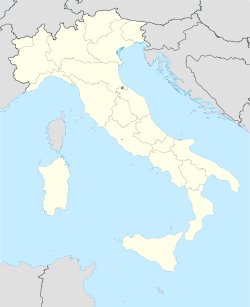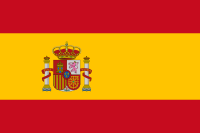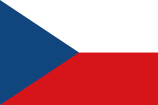Terni
| Comune di Terni | |
|---|---|
 |
|
 Municipal coat of arms |
|
 |
|
| Country | |
| Region | Umbria |
| Province | Terni (TR) |
| Mayor | Paolo Raffaelli (since June 13, 2004) |
| Elevation | 130 m (427 ft) |
| Area | 211 km² (81.5 sq mi) |
| Population (as of August 31, 2007) | |
| - Total | 110,638 |
| - Density | 524/km² (1,357/sq mi) |
| Time zone | CET, UTC+1 |
| Coordinates | |
| Gentilic | Ternani |
| Dialing code | 0744 |
| Postal code | 05100 |
| Frazioni | Acquapalombo, Appecano, Battiferro, Cecalocco, Cesi, Collegiacone, Collescipoli, Collestatte, Gabelletta, Giuncano Alto, Giuncano Scalo, Marmore, Miranda, Papigno, Piediluco, Poggio Lavarino, Polenaco, Porzano, Pracchia, Rivo, Rocca San Zenone, San Carlo, San Liberatore, Titurano, Torreorsina, Valenza |
| Patron | Saint Valentine |
| - Day | February 14 |
| Website: www.comuneterni.it | |

Terni is an ancient town of Italy, capital of Terni province in southern Umbria, in the plain of the Nera river. It is 104 km (65 mi) N of Rome, 36 km (23 mi) NW of Rieti, and 29 km (18 mi) S of Spoleto.
The city lies on the rail line from Rome to Ancona, and is the point of departure for the branch line to Rieti and L'Aquila. It is the seat of a university, and is one of the most important industrial towns of Umbria.
Contents |
History
The city was probably founded in the 7th century BC by the Sabini. In the 3rd century BC it was conquered by the Romans and soon become an important municipium lying on the Via Flaminia. The Roman name was Interamna, meaning "in between two rivers". During the Roman Empire the city was enriched with several buildings, including aqueducts, walls, amphitheaters, temples and bridges.
After the Lombard conquest (755) Terni lost any role of prominence, reducing to a secondary town in the Duchy of Spoleto. In 1174 it was again destroyed by Frederick Barbarossa's general, Archbishop Christian of Mainz. In the following century Terni was one of the favourite seat of St. Francis' prayings.
In the 14th century Terni issued a constitution of its own and from 1353 the walls were enlarged, and new channels were opened. As well as much of the Italian communes of the Late Middle Ages, it was slain by inner disputes between Guelphs and Ghibellines, and later between the two parties of Nobili and Banderari. Later it become part of the Papal States. In 1580 an ironwork, the Ferriera, was introduced to work the iron ore mined in Monteleone di Spoleto, starting the traditional industrial connotation of the city. In the 17th century, however, Terni declined further due to plagues and famines.
In the 19th century Terni took advantage of the Industrial Revolution and of the large presence of water sources in the area. New industries included a steelwork, a foundry, as well as weapons, jute and wool factories. In 1927 Terni became capital of province. The presence of a strong industries concentration made it a favourite target for the Allied bombardments in World War II, totalling 108 raids. Many quarters and public edifices were destroyed.
Main sights
- The Roman amphitheater, once capable of 10,000 spectators, built in 32 BC.
- The small Roman gate of Porta Sant'Angelo, one of the four ancient entrances to the city, much restored.
- The Cathedral (Duomo) of S. Maria Assunta (17th century). Built over one of the most ancient Christian edifices of the city, it has today Baroque lines. In the interior is one organ designed by Gian Lorenzo Bernini. the belfry is from the 18th century. The façade has two mediaeval gates: one of them has the profile of a sabot once used to measure the citizen's shoes in order they do not exceed a fixed limit of decency.
- Church of S. Francesco.
- The Basilica of S. Valentino.
- Palazzo Mazzancolli is one of the few remains of the Middle Ages past of the city.
- Palazzo Gazzoli (18th century), housing the City's Gallery with works by Pierfrancesco d'Amelia, Benozzo Gozzoli, Gerolamo Troppa and Orneore Metelli.
- Palazzo Spada (16th century), by Antonio da Sangallo the Younger. It is the current Town Hall.
- The Lancia di Luce ("Lance of Light"), by the sculptor Arnaldo Pomodoro.
- The Romanesque churches:
- S. Alò (11th century).
- S. Martino.
- S. Salvatore.
Nearby, at the confluence of the Velino and Nera Rivers, is the Cascata della Marmore, a 165 m waterfall.
Notable natives
- The Roman emperor Tacitus
- Saint Valentine
- Francesco Angeloni
- Anastasio De Filis
- Giulio Briccialdi
- Alessandro Casagrande
- Libero Liberati
- Mario Umberto Borzacchini
- Orneore Metelli
- Aurelio De Felice
- Cesare Bazzani
- Virgilio Alterocca.
The Roman historian Tacitus is often stated to have been born in Terni, but there is no evidence for the claim, which is circumstantially based on the probable birth there of the emperor of the same name, and on the attested fact that that emperor took care to have his namesake's works widely copied, in the apparent belief that they were related.
The case of St. Valentine is more complex, since there was undoubtedly an early bishop of Terni by that name, who is the city's patron. In late Antiquity, however, the name was a common one, and the bishop has become conflated with several other saints, the most important of whom, the soldier saint, was probably not from Terni.
Twin towns
 Cartagena, Spain
Cartagena, Spain Saint-Ouen, France
Saint-Ouen, France Prague 8, Czech Republic
Prague 8, Czech Republic Dunaújváros, Hungary
Dunaújváros, Hungary
External links
|
|||||||
